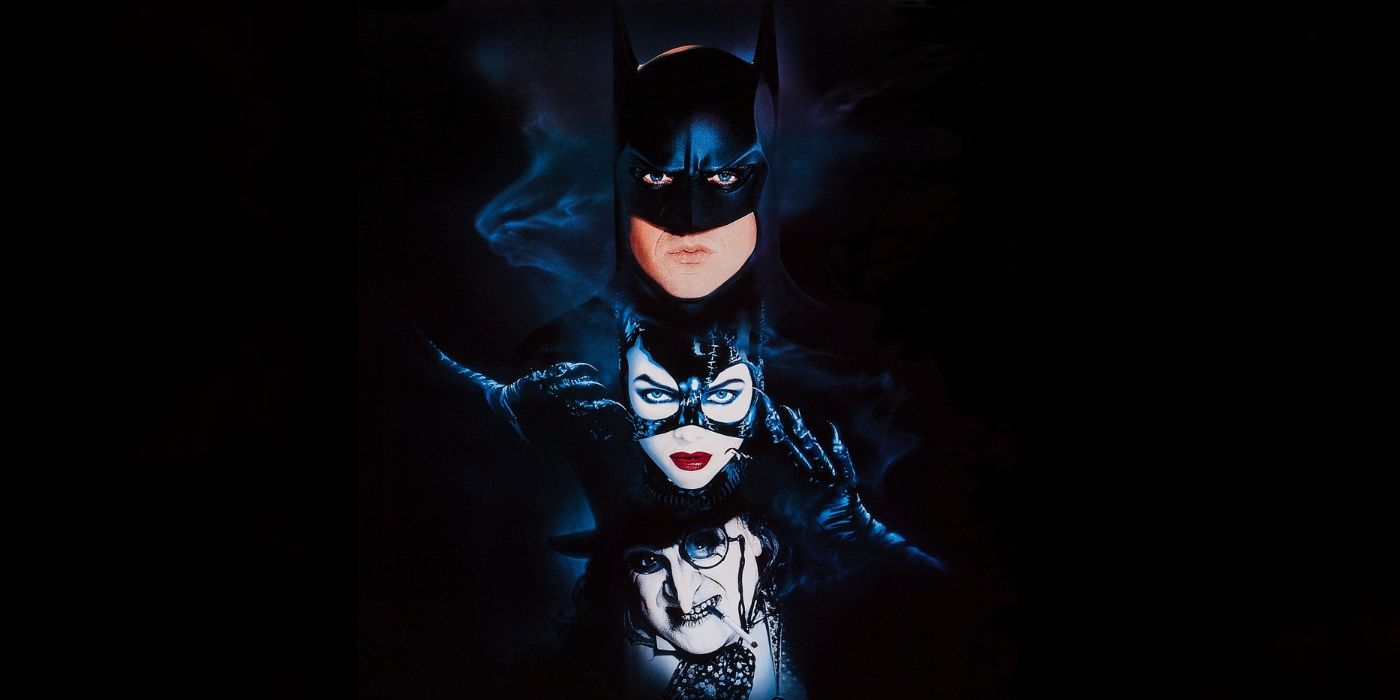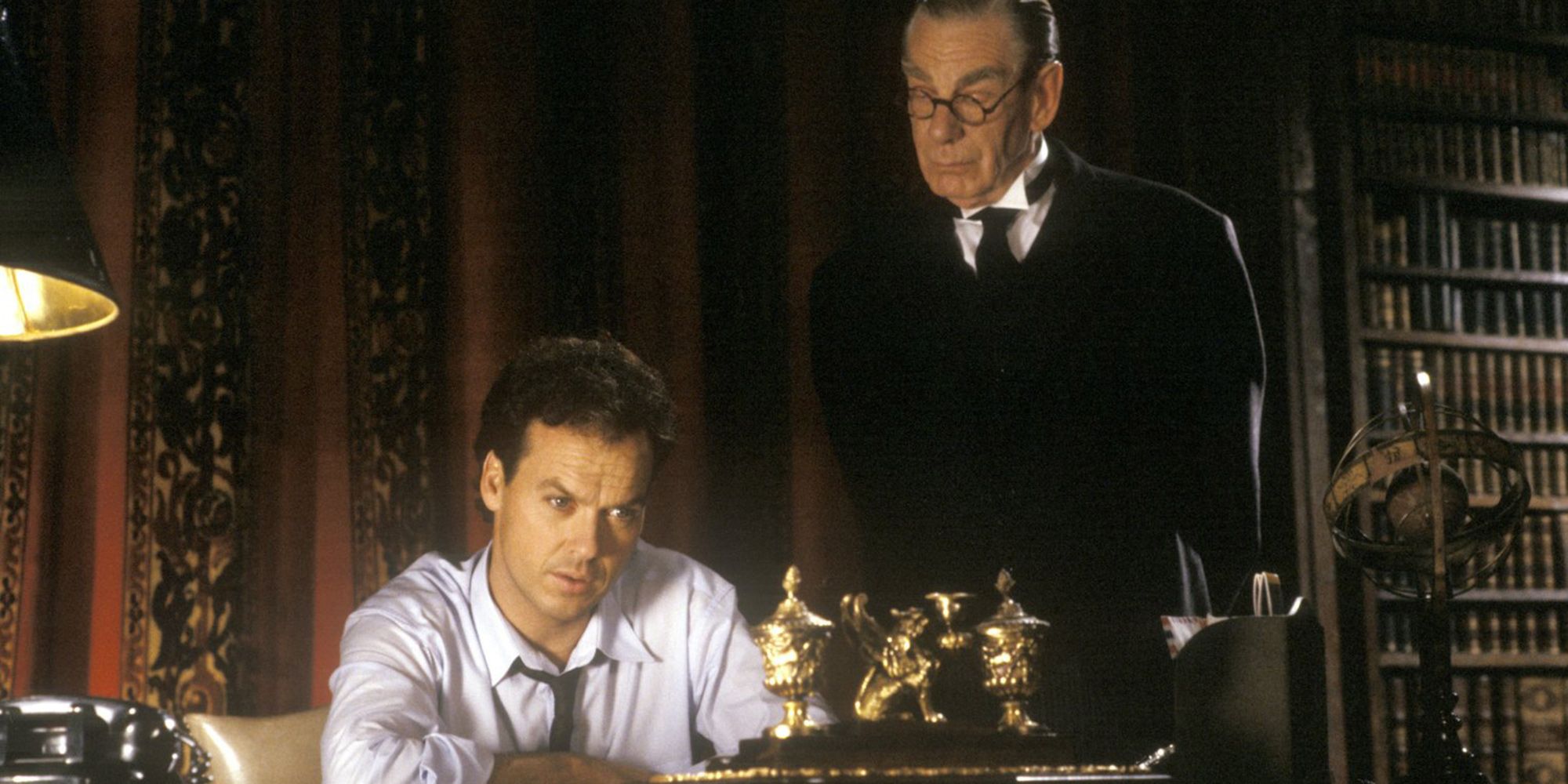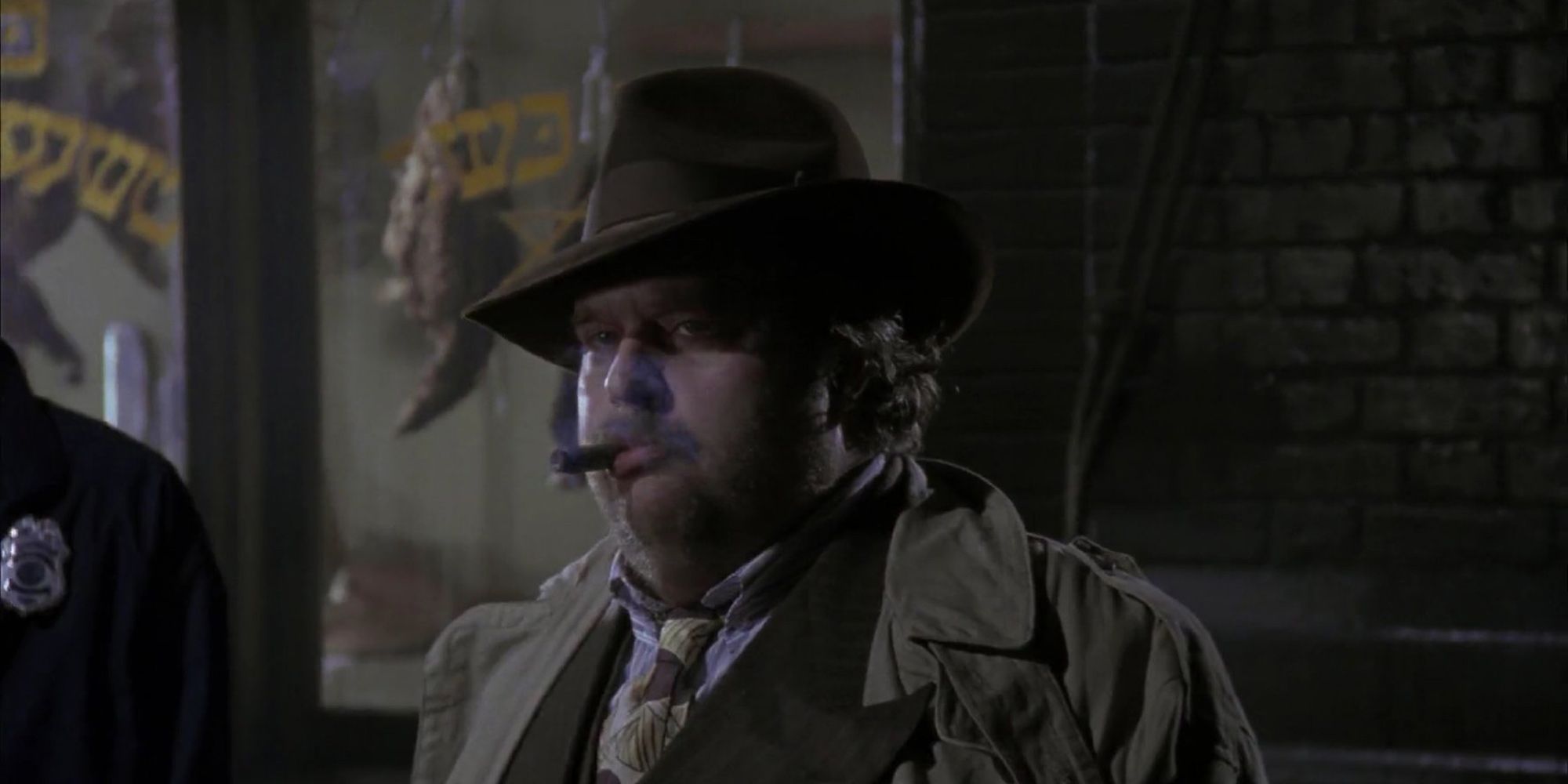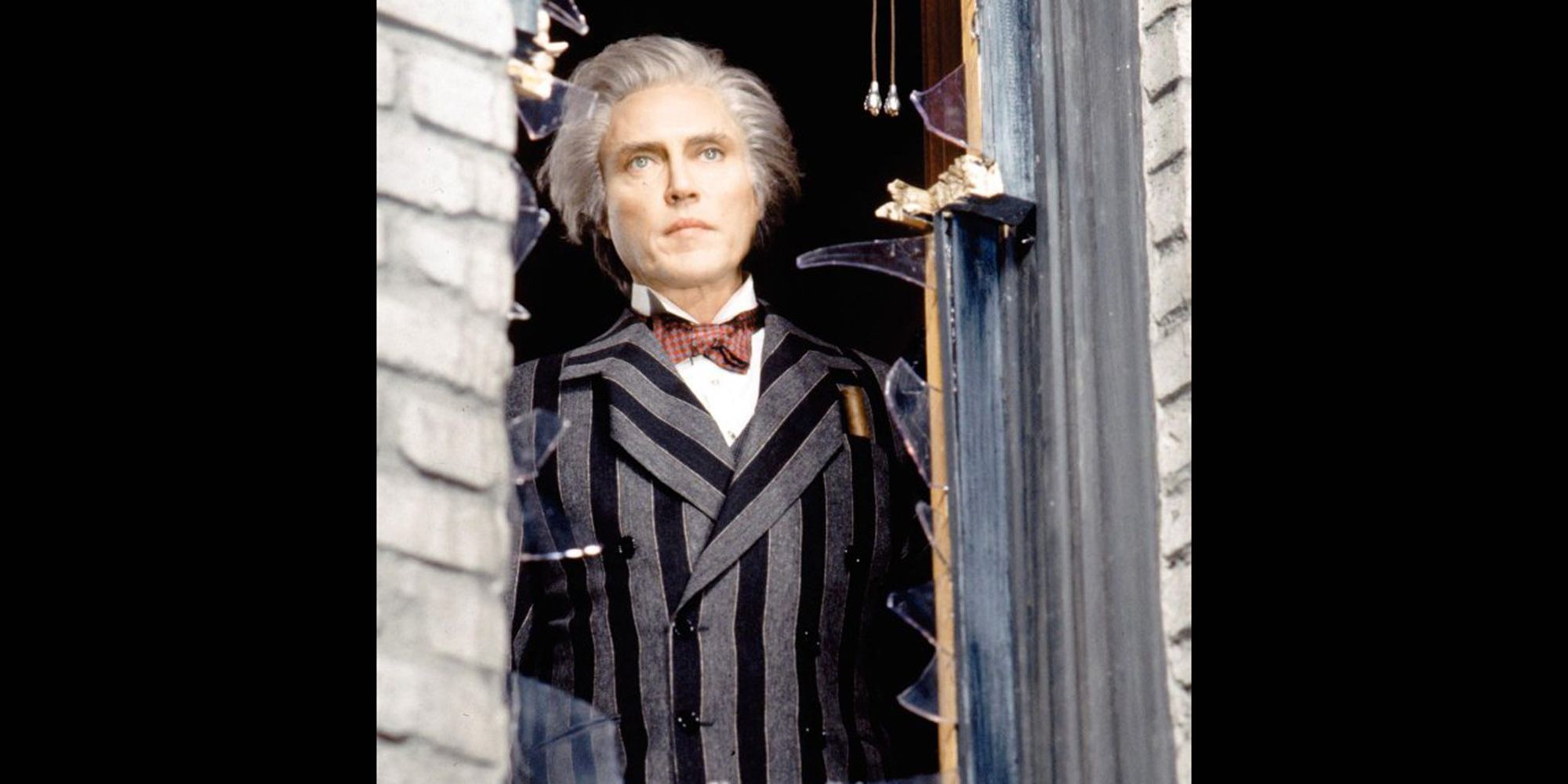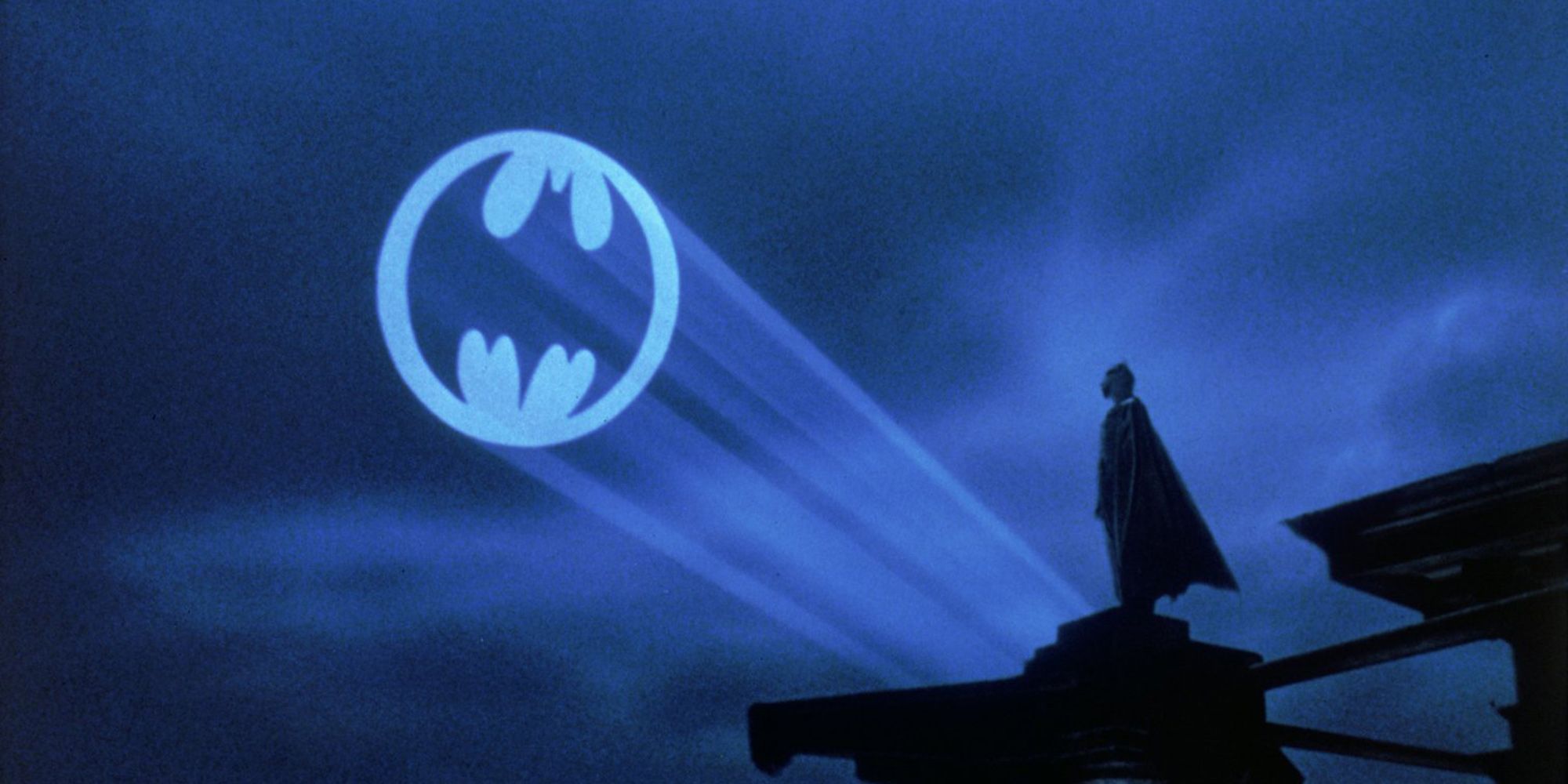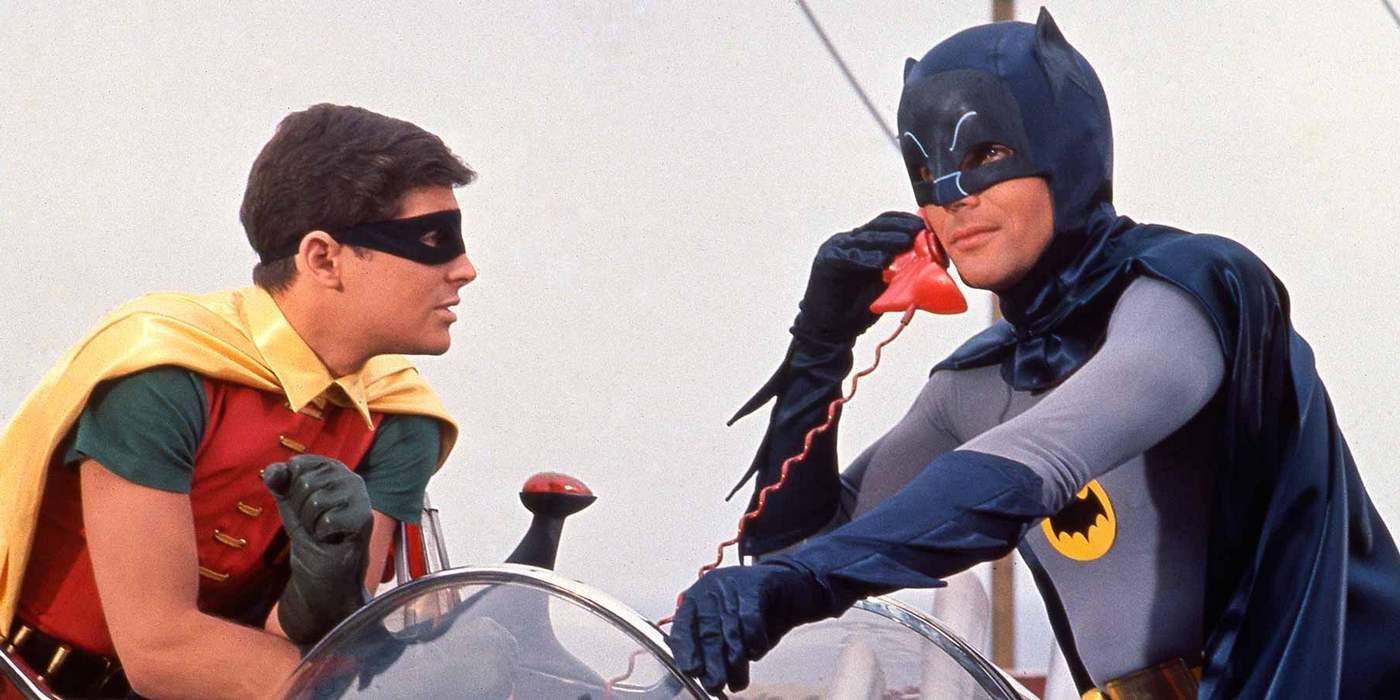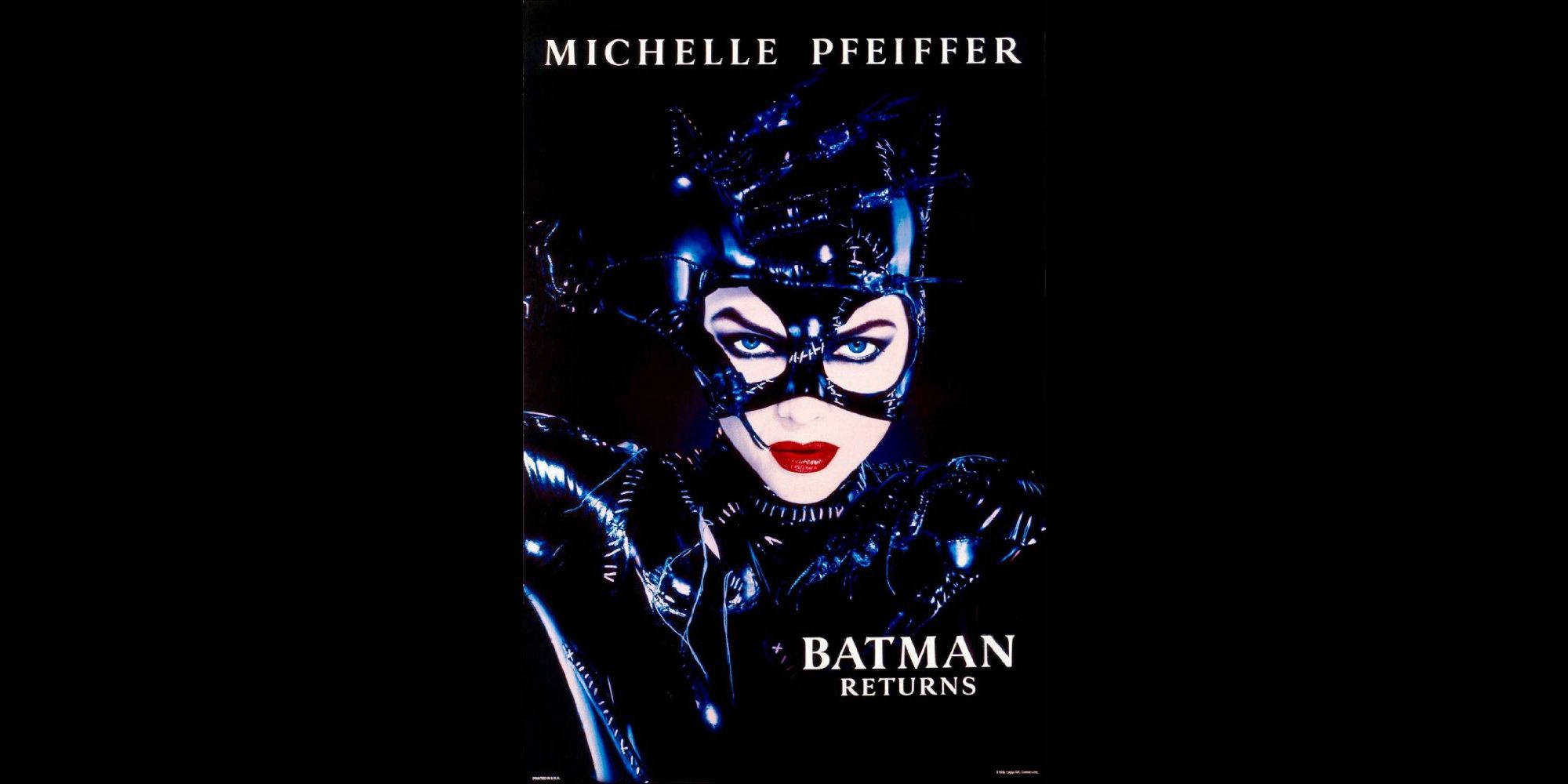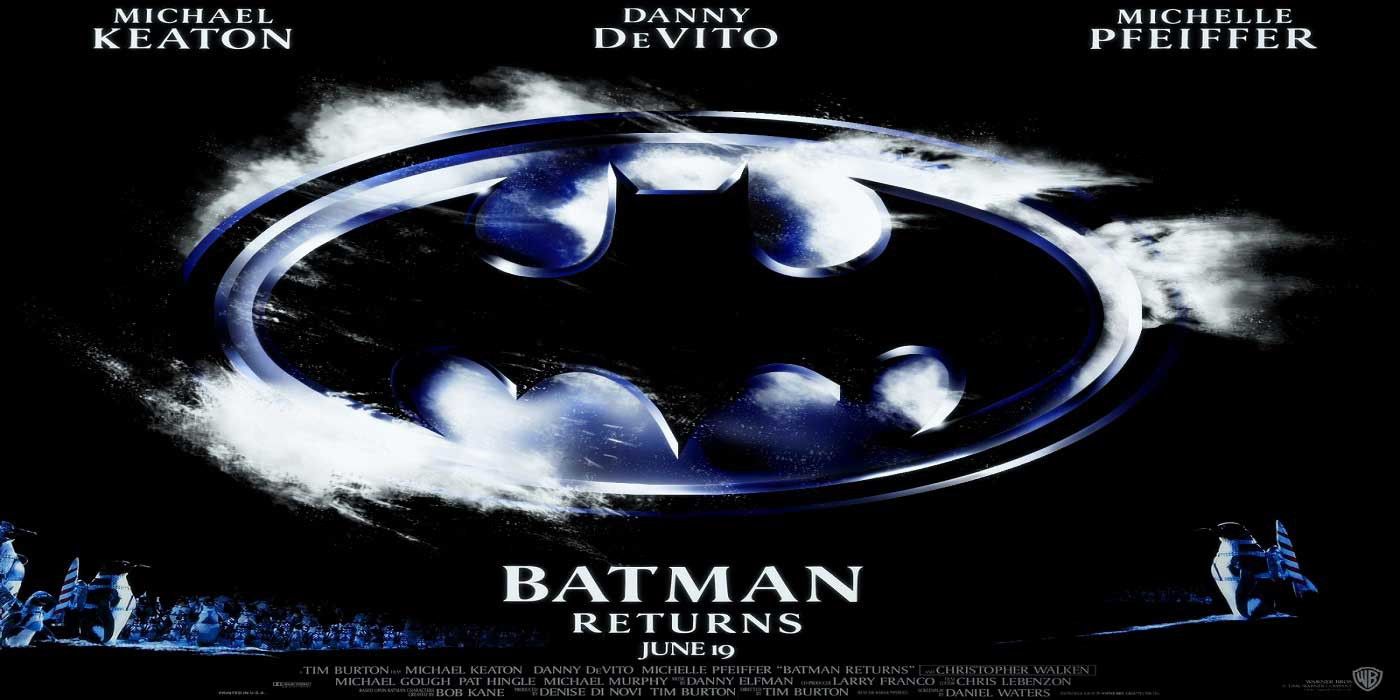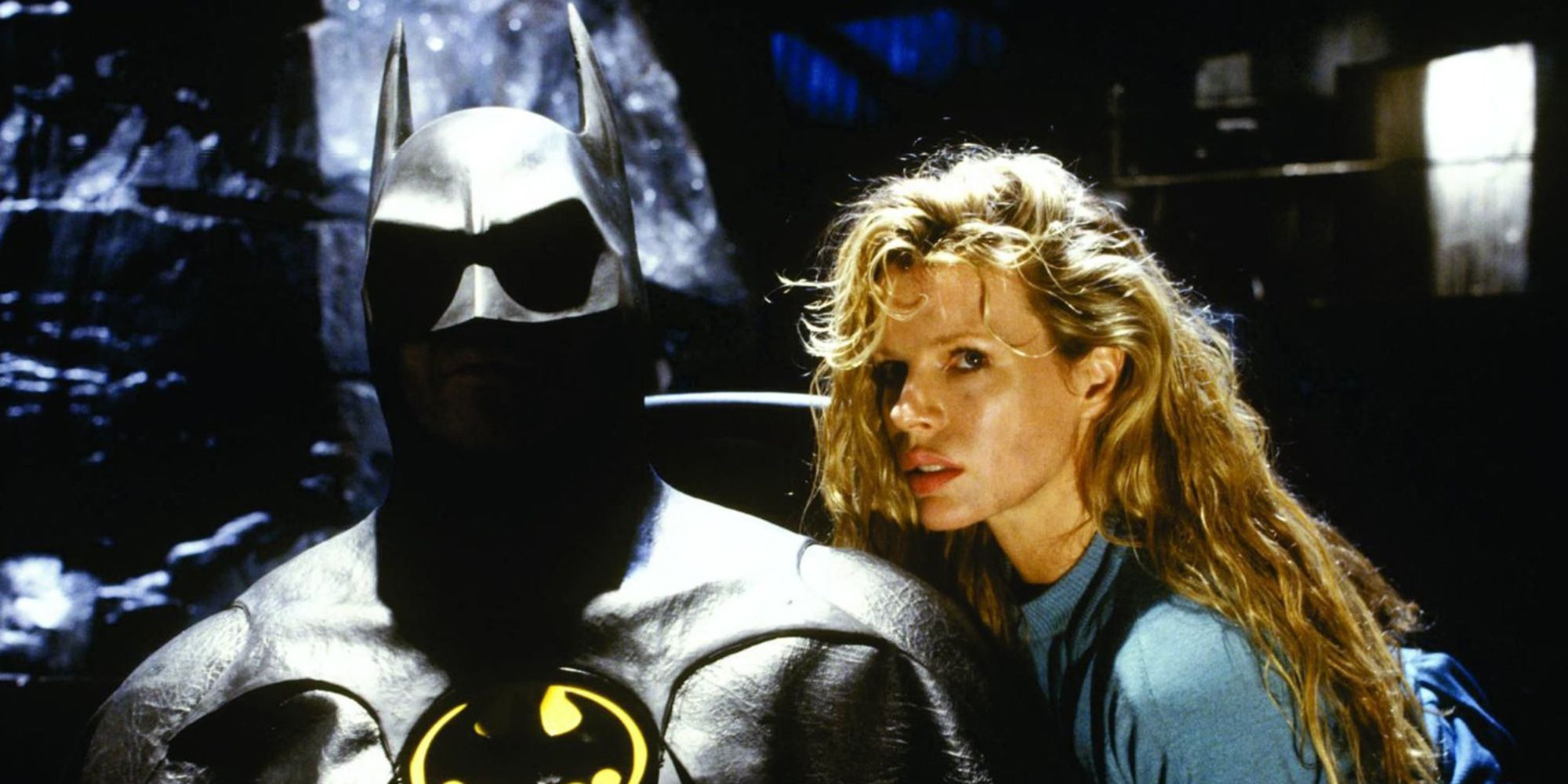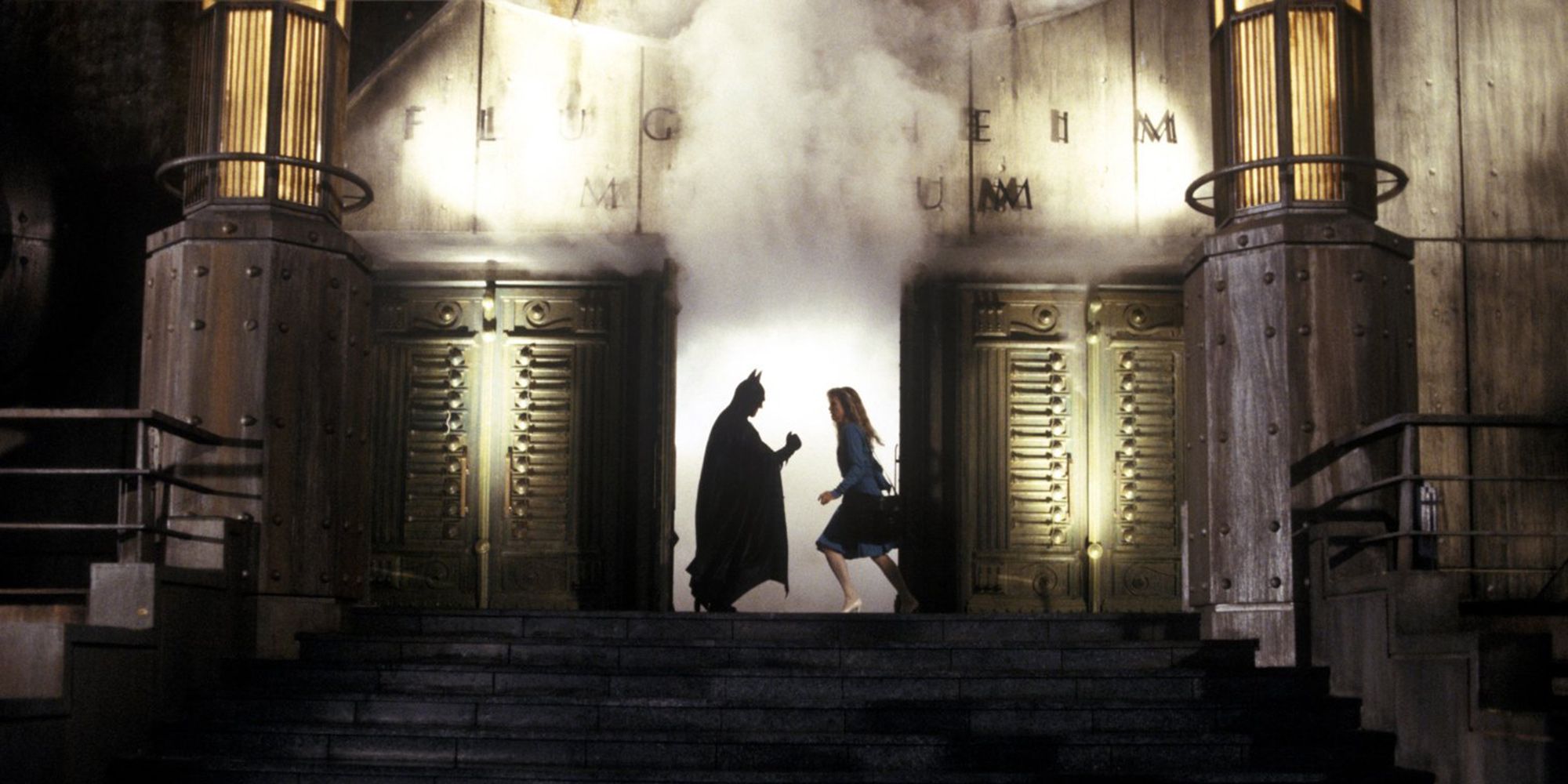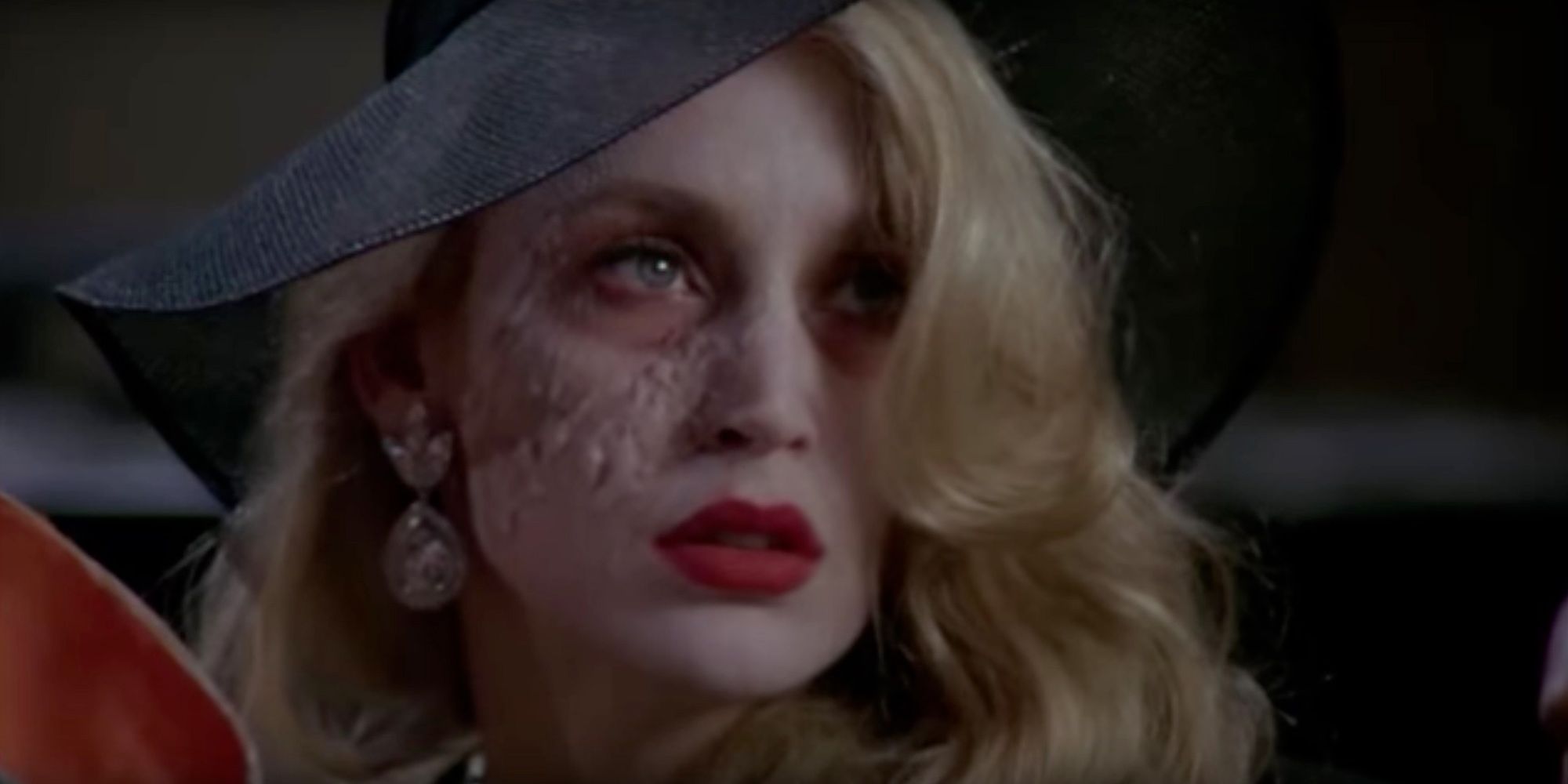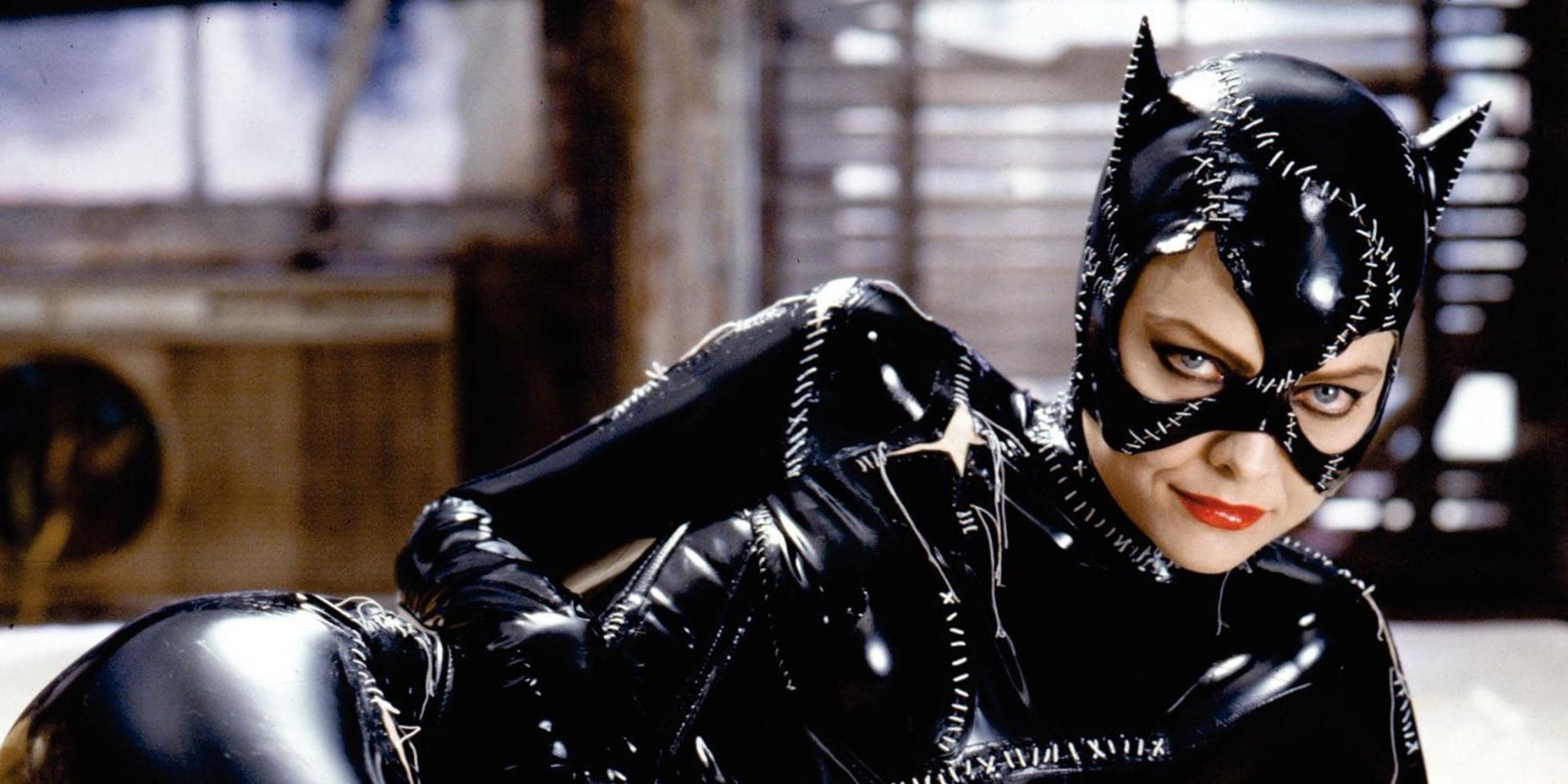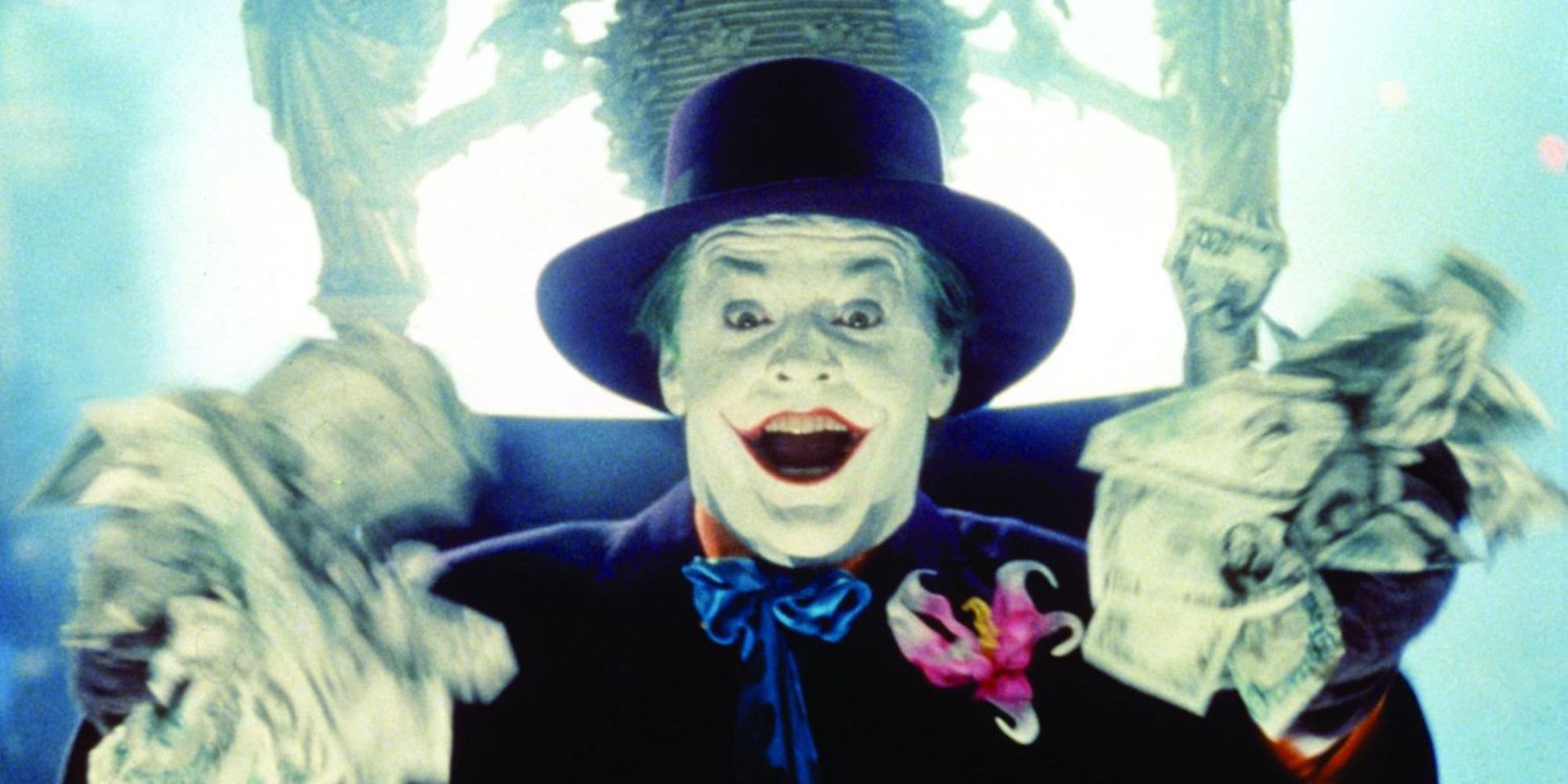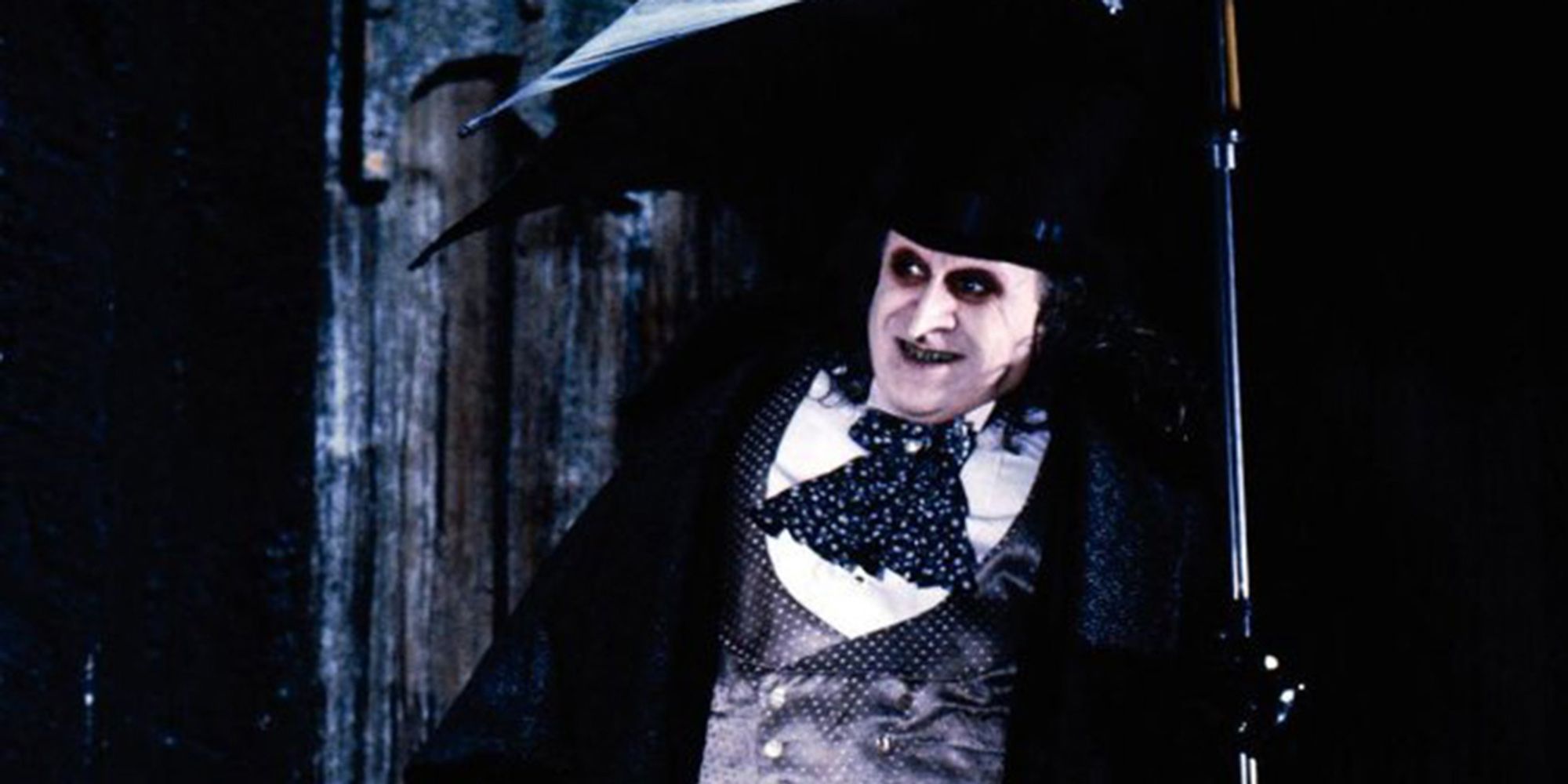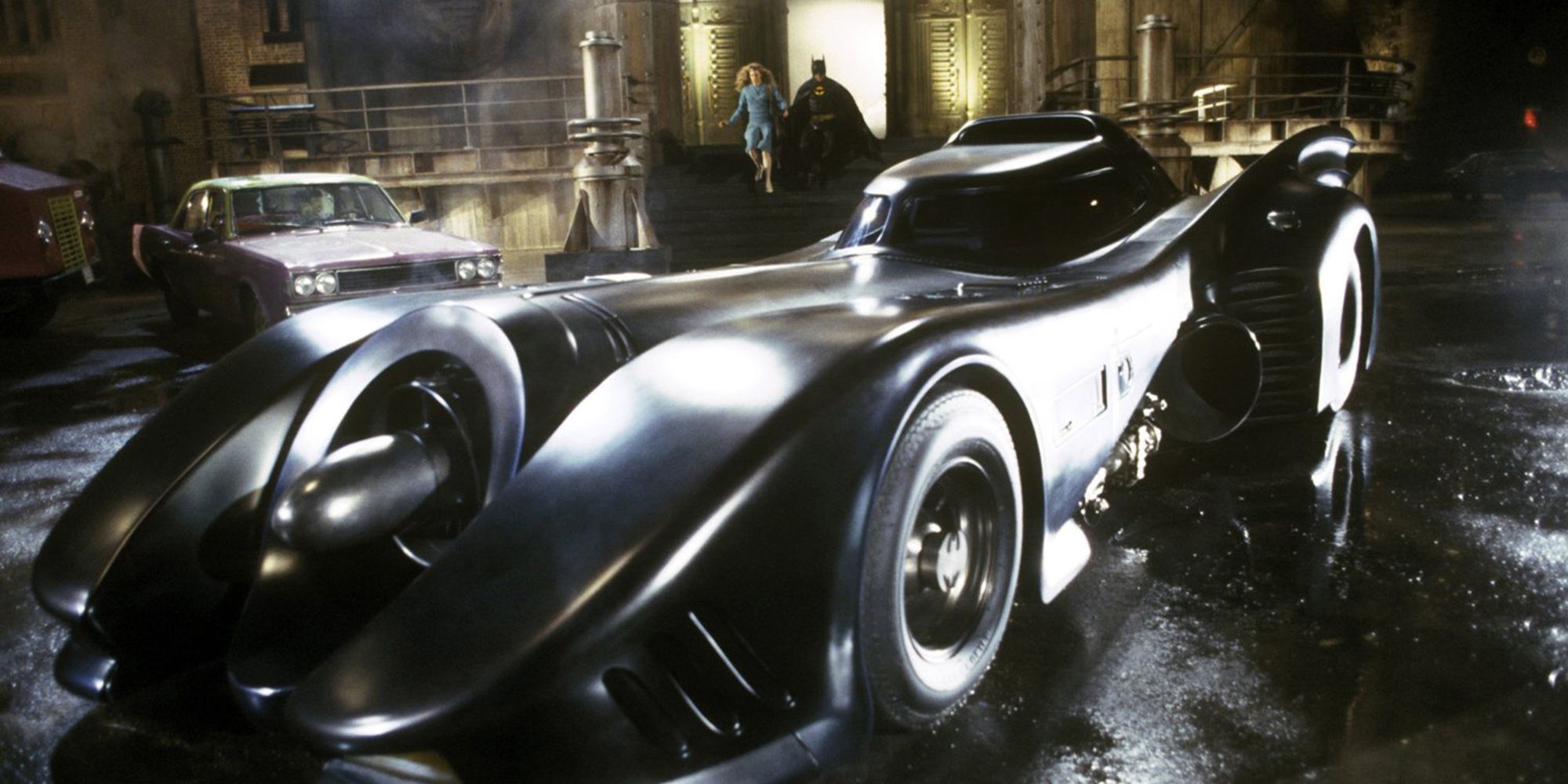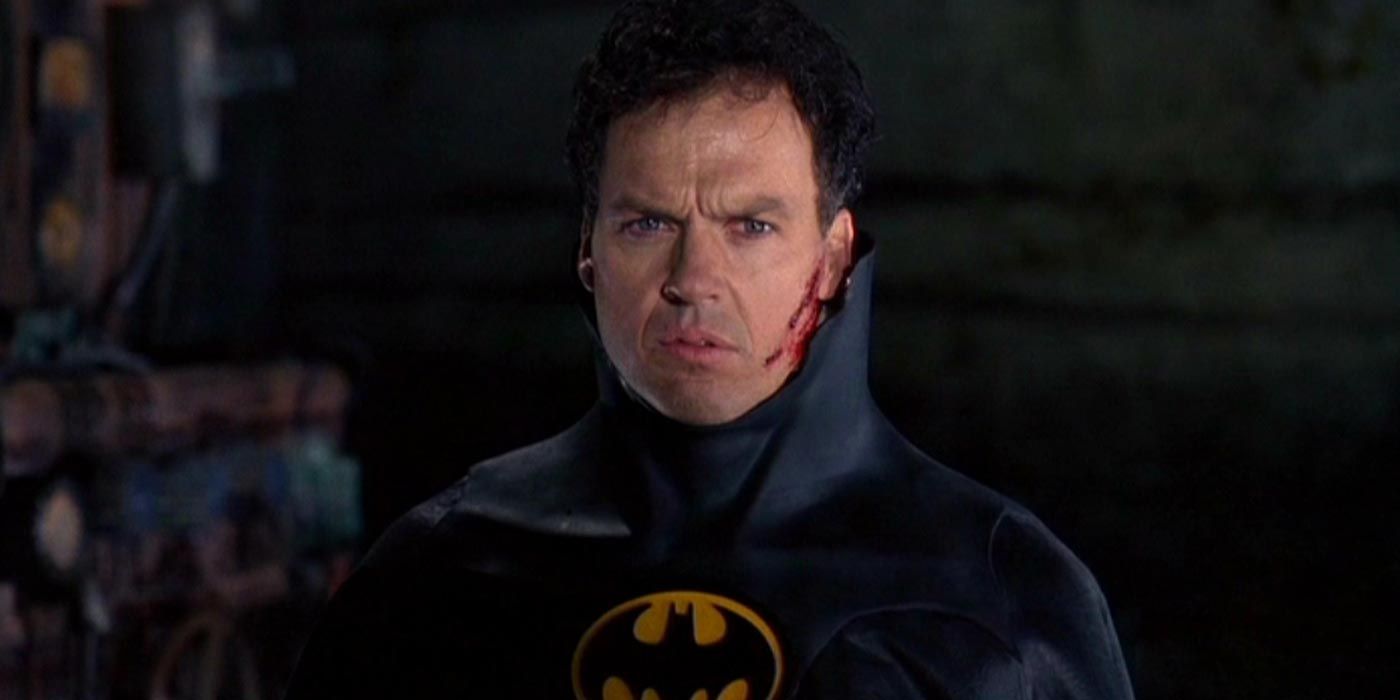Goodness knows there are plenty of "Batman" adaptations to argue about when pointlessly trying to figure out which one is objectively the best. So get ready to thank us, because we did the work for you. After a semi-exhaustive look at all of the film/tv adaptations of Bob Kane's vision, we've decided that the 100% very best example is the Tim Burton "Batman." "Batman" and "Batman Returns" nail the tone of the source material perfectly, all while inserting a sense of originality that made the movies truly groundbreaking.
RELATED: 15 Reasons Why Batman The Animated Series Is Better Than The Films
You could just look at the influence they've had on all other adaptations. The sunny, comedic disposition that surrounded the 1966 television series died forever when "Batman" premiered in 1989. More than that, it was Burton's movies that brought serious takes on comic books to the mainstream and gave them the legitimacy they enjoy to great profit today.
15 ADDRESSING MENTAL ILLNESS
Mental illness and questions of sanity have always been a big part of the Batman Universe. The villains aren't sent to a prison, they're sent to an asylum, and the vigilante who defends the city against them watched his parents murdered. Interestingly, those two things are just the tip of the iceberg. Burton's vision of Batman dealt heavily with those themes in a way no adaptation ever had.
In "Batman," Bruce Wayne is more disturbed by his own demons than he seems by his adversaries, and the Joker's primary storyline is that of a thug with a bad attitude turning into raving, psychotic, murderous clown. "Batman Returns" draws Catwoman just this side of a split personality disorder, instead of earlier interpretations that defined her solely as a teasing sex symbol. Seeing Gotham through this lens was groundbreaking and disturbing, especially when you consider that Adam West's "Batman" was the only time Batman had ever been represented on screen.
14 THE STAR WARS CAMEO
No one ever talks about this and they really should. Of all the fandom crossovers that should be (but will never in a million years occur anywhere but in fanfic),"Batman" meets "Star Wars" is probably number three. "Star Wars" meets "Star Trek" is number one, in case you were curious. But "Batman" comes pretty close in the actor who plays dirty cop, Lt. "Think of the future!" Eckhardt.
William Hootkins played the slovenly detective on Carl Grissom's payroll, and he meets his end in Axis Chemicals when he needles Jack Napier one too many times. He also had the pleasure of playing Jek Tono Porkins, aka Red Six, in "Star Wars Episode IV: A New Hope." He says this of the role: "A lot of actors dream of being involved with a film at the end of their career that inspires people, and makes a lot of people happy. I got to start my career with a film like that." Hootkins also appeared in "Raiders of the Lost Ark" and several other iconic works before passing away in 2005.
13 CHRISTOPHER WALKEN
No matter how realistic comic books will ever get (again, thank you Mr. Nolan), you can always spot the villain from miles away. They can't help it; these guys have an undeniable flare that's part of their very nature as comic book villains. They almost always have a flashy costume, some wacky ambition and LOTS of charisma. Christopher Walken fits this kind of villainy to a T.
His whole performance of Max Shrek is a balancing act between preening socialite and greedy murderer, and he does it all with a grey afro and a pinstripe suit. He falls somewhere between unlawful bad and unlawful chaotic on the D&D scale. Walken's enigmatic personality, which is comfortably uncomfortable, mirrors how the movie flirts with cartoonish design, but always lives more in realism than fantasy. It says a lot about the magnitude of his performance that you spent the entire movie trying to figure out who was worse: him or the psychotic man-bird who wants to kill a bunch of sleeping children.
12 THEY HOLD UP
Despite the fact that they are very highly stylized, these movies don't seem dated when they're watched today. It might be due to the fact that the "Batman" movies occurred more toward the nascency of Tim Burton's popularity, so their style has only become more appreciated with time. It could also be that, despite the film's design and soundtrack, the performances aren't terribly histrionic and thus, remain relatable.
It could also be that Burton just managed to perfectly juxtapose the cartoonish look of the comic with a gritty, live-action realism that hadn't been attempted before and has never been topped. "The Dark Knight" Trilogy is laudable, to be sure, and beautifully stands on its own, but it tries hard to distance itself from traditional comic book tropes. Heck, "Batman: The Animated Series" was arguably one of the best adaptations of the comics, but it's still a bit limited, given that its demographics were children and young adults. At the end of the day, despite the fact that both were so faithful to the comics, in execution, we think Burton's films remain more faithful to the subject matter.
11 NO ROBIN
Ugh, can we just say it? Can we all just say that Robin is terrible and his relationship with Bruce Wayne is just a little weird? No one's saying anything untoward was represented in that relationship, but did virtually no one in Gotham ask questions? Like, "Why does Bruce Wayne have this orphaned circus boy living with him?" Or, "Hey, Bruce Wayne's always busy at night and so is that Dick kid. Batman and Robin are only EVER out at night. What's up with that?"
The thing is, regardless of the value of a sidekick and regardless of the DOPE incarnations we've seen of Dick Grayson/Robin/Nightwing throughout the years, Batman doesn't need anyone else to make him interesting. Nolan's use of Grayson was tolerable given that the character works much, much better from a cinematic standpoint as an heir rather than a li'l buddy. But when Batman and Robin appear on screen together as they did in the days of Joel Shumacher and Adam West, it never works quite as well as the movies and television shows without Robin or with a severely limited one.
10 ICONIC ADVERTISING
When we say advertising, what we're really talking about are the posters. This might not be a fair comparison because up until the Burton Batman flicks, there were literally no "Batman" posters like his. But the hype for 1989's "Batman" (which was up there with "Star Wars" or at least in the same... galaxy) was so intense in part because of the singular posters. Unlike iconic films of the day, these weren't complex, story-driven pictures. They were invariably simple, shiny, bat symbols or the title of the film in crisp, block lettering. Just looking at them, you know you're in for something authentic and real.
As for "Batman Returns," it was marketed very differently, but it had Michelle Pfeiffer's face at its disposal. Catwoman is one of the most iconic characters in the Batman franchise, second only (MAYBE) to the Joker. Michelle Pfeiffer was such perfect casting and her look so incredible that people kept stealing her bus stop advertisements by breaking the plexiglass protecting them and stealing the posters beneath. Certain cities were forced to patrol the bus stops to make sure it stopped happening.
9 THE MUSIC
Danny Elfman composed the score for both movies, and the "Batman" theme he wrote won such wide-acclaim, it became synonymous with the franchise; so much so that it became the basis for the theme song to "Batman: The Animated Series." The music perfectly accompanies the foreboding nature of Gotham City and Batman's journey as a whole. It makes it very clear that this story is a story about someone who's agreed to fight in a battle in which he is impossibly outnumbered. With "Batman Returns," Elfman composed a delicate string theme that evokes the more romantic, tragic nature of the film. And then, of course, there's Prince.
Initially, the late artist was in talks to contribute two of his already popular tracks, but instead wound up producing an entire album devoted to the movie. That album would eventually become the film's soundtrack, and it's an incredibly appropriate companion piece. It encapsulates the darkly hedonistic world that Gotham is without Batman and is the perfect accompaniment to the Joker's antics.
8 FEMINIST COUNTERPARTS
Okay, yes, Vicki Vale screams a lot and Alicia throws herself out a window after the Joker "arts" all over her face, but in actuality, the women in Burton's "Batman" movies are given a decently feminist treatment, at least given the standards of the time. While Vicki Vale does eventually become a damsel in distress, it's kind of "damsel in name only." She doesn't shrink from Bruce's lifestyle, and in fact takes the opportunity to delve deeper into it.
Pfeiffer's Catwoman goes on a journey of self-discovery that looks destructive on the surface, but is really the story of a woman who refuses to change for a relationship. Yeah, she might be mad as a march hare, but she's still a great role model for women who refuse to live their lives in any way but the in the manner of their own choosing. The fact that her "manner" was whip-wielding-badass doesn't take away from the accomplishment.
7 GOTHAM
Anton Furst won an Oscar for his work in creating the Gotham City of Tim Burton's films. The two shared a symbiotic relationship that resulted in an expression of the city meant to invoke themes of fascism and hopelessness. And it absolutely works. The imposing buildings keep out sunlight, and the rest of the architecture is a mishmash of styles, each structure crumbling under the weight of poverty and decay. In "Batman Returns," the discrepancy between the haves and have-nots is even more clearly seen when Gotham is decked out in Christmas decorations that almost hilariously fail to conceal its dystopic atmosphere. It is abundantly clear who has the power in this city, and it's a bunch of wealthy criminals.
Whether it's Max Shrek or Carl Grissom, that kind of villain is perfectly housed in the gothic skyscrapers that tower over the lower classes. By calling back to a time when mob bosses and captains of industry were villains with style, Burton and Hurst created the perfect setting for the blending of the noir and comic book genres.
6 THE MACABRE
Something "The Dark Knight" trilogy and "Batman: The Animated Series" failed to achieve in comparison to Burton's work was the eerie feeling that the crimes happening in Gotham City were very different than the crimes happening anywhere else. The Joker doesn't just abuse his girlfriend, he throws acid on her face and introduces her as "art" on dates with other women. The Ice Princess is an innocent, and she dies horribly after being pushed off of a building by a man who styles himself after a bird. If that weren't enough, she falls on the button she was supposed to push to light the Gotham Christmas tree, so she dies and the tree lights up immediately.
These things aren't just dark, they are entirely higher (or lower) levels of messed-up and there are countless other examples. These movies are, at their hearts, disturbing and unsettling. Batman is an anti-hero here more than he is in any other adaptation of the comics, and the villains are so far beyond redemption, they don't always register as human. By relishing Gotham's weirdness instead of trying to rationalize it, Burton's films become even more exciting to watch because we're never quite sure of his limits.
5 PFEIFFER'S CATWOMAN
Everyone take a minute and communal slow-clap for everything about this performance. Every inch of it is genius, and we're not talking about her suit. Pfeiffer captured the inner conflict of Selina Kyle like no one had ever seen (no surprise, considering they'd only ever seen her on West's "Batman"), and she elevated what could have been a femme fatale love interest to something truly, beautifully, madly human.
The reason Catwoman and Batman make such an enduring couple is that they share parallel journeys. They both live their lives battling mental demons that threaten their sanity and morality. Catwoman trends toward the darker, more chaotic side, while Batman strives to maintain order in all areas. Looking at Pfeiffer's performance through this lens, it's easy to see how perfectly she embodies that conflict. She uses her sexuality expertly, sometimes as a weapon and other times to signal the character's vulnerability. Pfeiffer embraces the glee Catwoman feels when she indulges her darker side for the first time, but then the audience watches her realize that delving too far means she'll eventually pass a point of no return. It's pitch perfect from start to finish.
4 NICHOLSON'S JOKER
When it came time for casting, every leading white man from David Bowie to James Woods was discussed. But Nicholson's name had been number one on Bob Kane's list since talk of a new feature had begun years before. And thank goodness, because, DAY-UM.
Jack Nicholson's trademark wolfish grin always makes it seem like there's a little something maniacal going on underneath. It's why "About Schmidt" didn't work for a lot of people and it's part of the reason "Batman" did. Also, Nicholson lends a weight to the part that gives the character more than a clownish madness. His insanity is truly terrifying because he's a powerful thug first and doesn't evolve into the more traditional, mad-clown Joker personal until much later in the film. His transformation is what we see on screen, and that makes it a shade more effective than Heath Ledger's rootless insanity or Mark Hamill's more jester-like Joker. Obviously this point is up for debate, but nothing will ever top the image of Nicholson's Joker, dead on the sidewalk, smile frozen on his face and his laugh track still running.
3 JUST CARTOONISH ENOUGH
Everything in Tim Burton's movies makes you think that he thinks in cartoon and has to translate to live-action in his head before he starts working. Everything from the set design to the costumes to the story is just left of realism, but always enough to evoke the story's comic book roots without being too on-the-nose. Gotham's joyless grey streets make the Joker's suit and the Penguin's whole... look... stand out and mark them for the crazies they are. The cars are a little out of time, the fashion is its own beast -- a heady combo of vintage and late-'80s/early '90s mainstream -- and the villains all look as though they're really thinking about twirling a mustache, but eventually decide to hold back.
The movies are lent credibility by invoking their source material this way, and that sense of authenticity means the audience could engage with them on a nostalgic level and on an exploratory one. They were a genuine evolution of the character and the franchise, as opposed to the works of a director forcing his own style on an established work and failing.
2 THE NOIR ASPECT
With its impossibly Sunny Gotham City, and its cartoonish villain hall of fame, West's "Batman" television show sort of missed the mark on "Batman's" noir tone (on purpose, we know). The same obviously cannot be said of the Burton films. Given that the inspiration for this particular adaptation was taken from the two series, "The Dark Knight Returns" and "The Killing Joke," this was no surprise to comic fans, but not the mainstream. The "Superman" movies were the most memorable comic book films at that point, and Burton's projects were their antithesis. Dark lighting, semi-period design and violent subject matter made "Batman" and "Batman Returns" undeniably evocative of "Batman's" original comic roots.
Bob Kane was so impressed with the design when he visited Pinewood Studios during filming that he described the set like this: "I envisaged Gotham the way I see it now at Pinewood. They've got it; every building, every trash can, every brick." The only place anyone had ever seen "Batman" like this before was on the page.
1 MICHAEL KEATON
So here's the thing, when Michael Keaton was cast in "Batman," NO ONE thought he could do it. He'd worked with Tim Burton before, but on "Beetlejuice." He was known solely as a comedic actor up until his work in "Batman," and the public judged him to be horribly miscast. If you think the uproar surrounding Ben Affleck was bad, it was nothing compared to what happened with Michael Keaton. Luckily, Keaton managed to prove the naysayers very, very wrong and turned in a performance that immortalized him as the character.
Convinced there wasn't enough of the suit to hide Wayne's identity when he dressed as Batman, he opted to lower the latter's voice to help distinguish the two personas. It became a trademark of the character, so much so that Christian Bale adopted the practice when he took on the role. Beyond that, Keaton is simply perfect as a playboy with both inner and outer villains to fight. Plus, his comedic background made sure the movies came with the perfect sprinkling of levity. When Michael Keaton was asked why he wasn't jealous when he learned Ben Affleck had been cast, he simply responded, "Because I'm Batman." We agree. Mic drop.
What do you love about Burton's Batman movies? Think they're the best of the Bat-best? Let us know in the comments!

